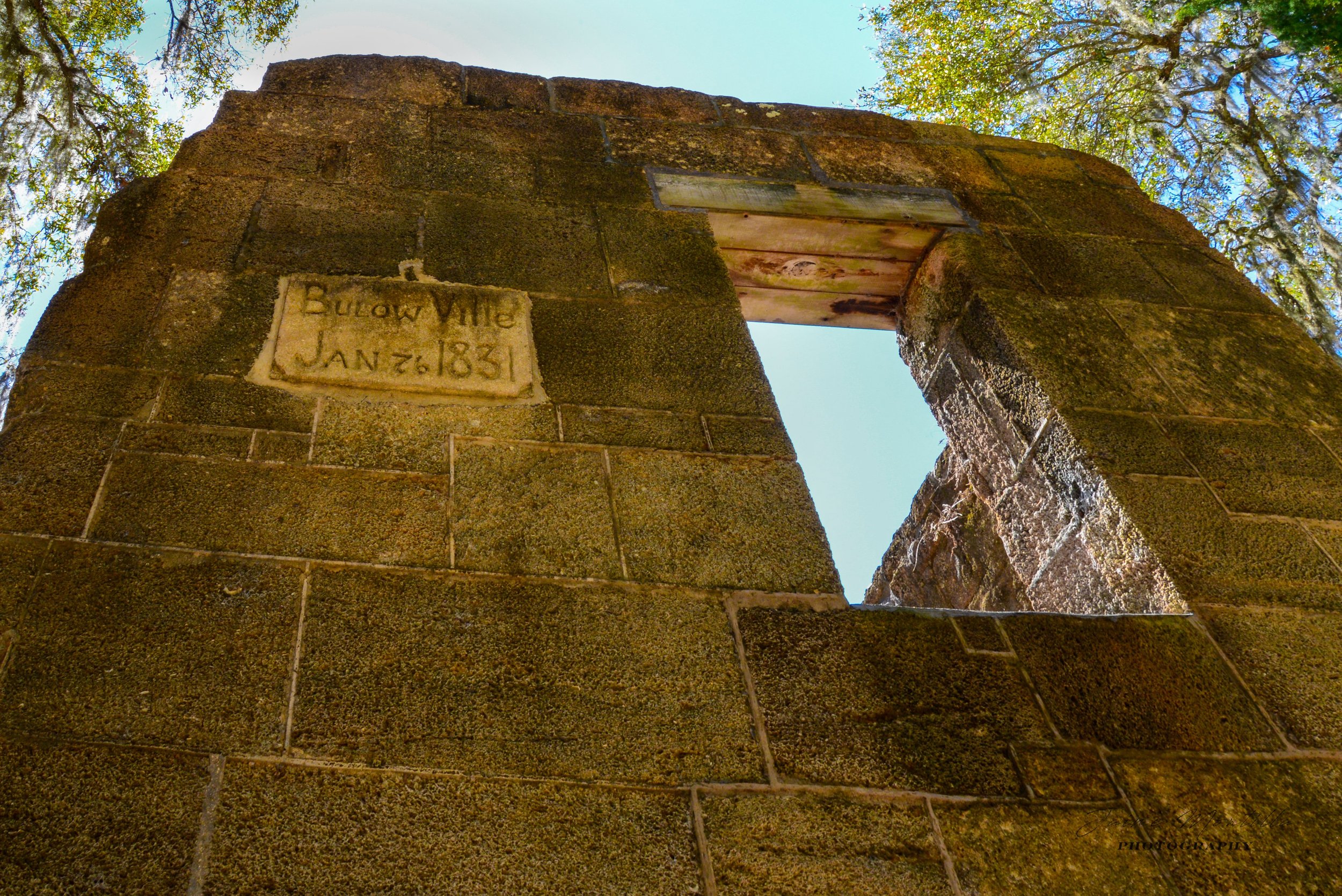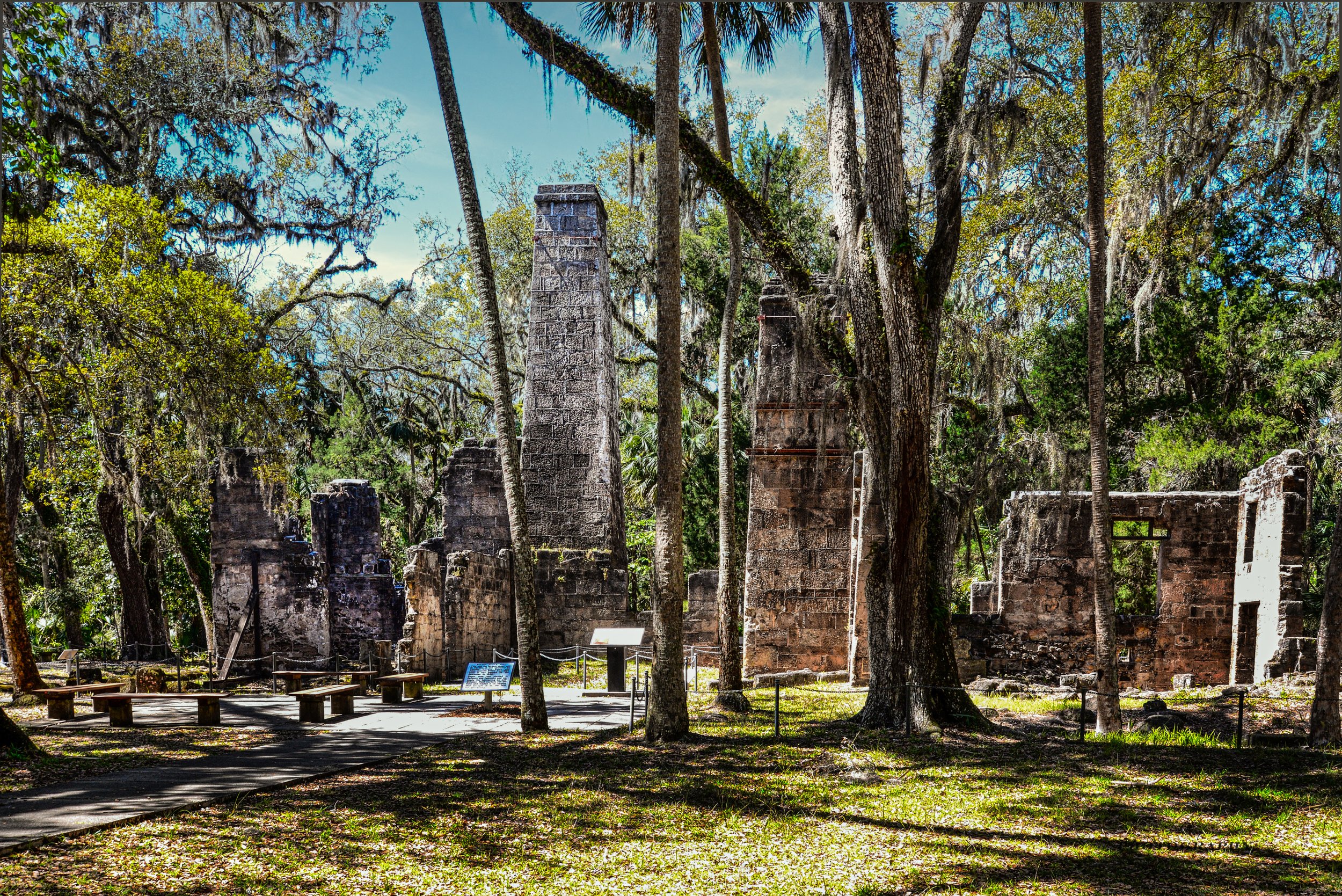
Bulow Plantation
Charles Wilhelm Bulow (1779-1823) was the second son of Joachim Von Bulow, a German immigrant that came to Charleston, SC to establish the Lutheran Church in the United States. Charles Wilhelm was born at Ashley Hall in Charleston, SC and died at Bulowville, FL. He was already a wealthy merchant when in 1820 he established a 4,675 acre plantation in Florida, some forty miles south of St. Augustine on a tidal creek later named Bulow Creek. He used 1,500 acres to grow sugarcane, 1,000 for cotton and lesser plots for indigo and rice. Over three hundred slaves were used to clear the land and erect numerous buildings.
Charles Wilhelm Bulow lived just three years after establishing the Florida Plantation which was run after his death by his only son John Joachim Bulow (ca. 1807-1836). The plantation prospered under John Joachim and it became synonymous with bounty and wealth. John J. was a dashing young man who had been educated in Paris, France. He built a great sugar mill and a large two story house where he entertained many guests including John James Audubon in 1831. John J. used to travel in state on an eight-oared barge as far as Jupiter Inlet, with his guns, nets, tent and cooks. But the period when young Bulow could live as "monarch of all he surveyed" came to an abrupt end in December, 1835 with the outbreak of the Second Seminole Indian War.
Major Benjamin A. Putnam was sent from St. Augustine with a detachment of militia to protect the plantations to the south. Putnam moved his headquarters to Bulowville but as he and his column entered the plantation on Dec 28, 1835 they were met with resistance from John J. who fired a four-pounder at the troops. John J. was put under guard in his own home until Jan 23, 1836 when Putnam’s troops and plantation residents retreated to St. Augustine. Shortly thereafter, the Indians burned and destroyed the plantation. John J. Bulow returned to Paris and some accounts have him dying there the following year at the age of 27. However, on April 1, 1836 John J. appeared before a Justice of the Peace making a statement of losses due to the army occupation, on May 11, 1836 a statement appeared in the Florida Herald of Charleston saying that Bulow had died in St. Augustine on May 7th. He left no heirs so the estate went to his sister Emily Ann; Mrs. William G. Bucknor of N.Y.
In or around 1858, Charles Bulow Bucknor, son of Emily Ann and heir of the Bulow plantation, presented a claim to Congress for damages in the amount of $83,475. The bill passed both the House and the Senate but never in the same session, so it finally lapsed. In 1893, the heirs hired John Wedderburn of the Examiner Bureau of Claims to again file a claim against the U. S. and Seminole Indians but it was dismissed in 1906 on the Government’s motion for non-prosecution.
The Florida Park Service acquired the ruins in 1945, they were listed on the National Register of Historic Places in 1970 but the registration document has not yet been digitized. Today, 150 acres of the Bulow Plantation and its ruins stand as a monument to the rise and fall of sugar plantations in East Florida.







